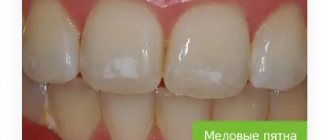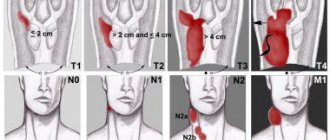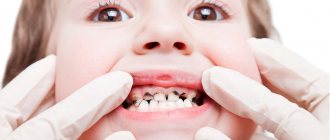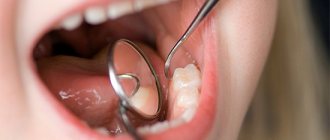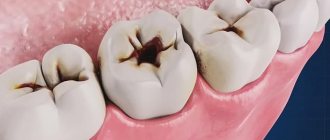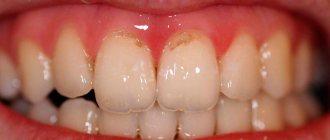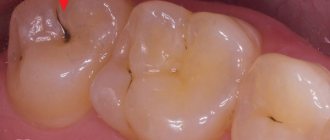Cemental caries, or root caries, is less common than cervical caries, but is considered more dangerous and destructive to the tooth. The fact is that the root walls are thin and therefore caries destroys them faster and reaches the pulp. Root caries often becomes a complication of cervical caries or occurs as an independent disease. Its official name is cement caries, which indicates the location of the lesion - under the gum. This is precisely the problem. Ordinary caries can be seen with the naked eye by characteristic spots, but root caries is invisible.
Theories of caries occurrence
Recent archaeological research confirms that even our ancestors, who lived more than five thousand years ago, suffered from caries. Information about the destruction of teeth similar to carious ones can be found in the works of ancient and ancient Eastern healers; in the Middle Ages, bad teeth were a widespread problem, and street teeth grinders became characters in folklore and even found their way into many literary works of those times.
The word “caries” itself came to us from Latin and literally means “rotting.” For the sake of fairness, it is worth noting that initially this name was poliomyelitis, but after that a disease that we all know was established under this name - an infectious process that destroys, and sometimes simply “devouring” a person’s teeth. The causes of caries and, as a consequence, ways to get rid of it occupied the minds of many learned men of antiquity and the Middle Ages. All sorts of assumptions have been made - from an excess of “bad juices” entering the body, which was used in antiquity (I must say, there is some truth in this, if by bad juices we mean all kinds of food acids), to “tooth worms” in the Middle Ages.
Rules for selecting and making a filling
The key to success when applying a high-quality and durable filling is to follow the technology of its preparation. Even when using high-quality materials, violation of the manufacturing and application protocol sharply reduces its performance characteristics.
The choice of filling depends on the location of the tooth in the dental system, the strength of the chewing load, and the characteristics of the bite. So, if it is necessary to treat teeth along the smile line, the filling should not only be durable, but also aesthetically pleasing and inconspicuous. Dentists choose composite materials, silicates.
Filling a carious cavity as the final stage is performed only after complete cleansing of the prepared area, removal of dentinal fragments, and drying. The absence of moisture and organic sawdust increases the contact of the filling with the natural tooth tissue. After the filling is fixed and completely hardened, the doctor grinds and adjusts it to the anatomical shape (removes excess material, shapes the edges). Once the filling is comfortable for the patient when closing the jaws, it is polished.
Special attention is paid to polishing. The better the filling is polished, the lower the risk of developing recurrent caries. The uniformity and smoothness of the coating prevents corrosion, accumulation of plaque and tartar, and further destruction.
Causes of dental caries
Today, debates about what caries is and why it happens are long gone. The cause of caries is known to everyone - it is carious bacteria that feed on carbohydrate residues from food and live in dental plaque. By the way, we are not born with these bacteria, they are not part of the original composition of our microflora, but once they enter the body, they settle in it forever. As a rule, “caries infection” occurs in childhood, and we perceive this disease from our own parents - most often through shared utensils. However, caries bacteria can lie dormant in our body for a long time, not manifesting themselves until the first opportunity.
And although caries is currently perhaps the most studied dental disease, the question still remains of how to stop caries - discoveries in this field are made almost every year.
Preventive actions
Prevention of caries consists of high-quality removal of tartar and plaque using special means: toothpastes, rinses, flosses, irrigators. Prevention of caries in children comes down to early instillation of oral hygiene skills. Popular recommendations:
- annual dental examination;
- professional teeth cleaning to remove tartar and plaque at least once a year;
- taking vitamins and calcium-containing medications;
- normalization of diet;
- improving food quality, balanced diet;
- timely treatment of chronic diseases of internal organs and systems.
Persons with chronic diseases of the ENT organs, prone to colds and respiratory infections, should take immunomodulators in courses. In case of a burdened dental history or hereditary predisposition, special pastes with a high concentration of fluoride are recommended. For recurrent caries, periodic application of mineralizing, antiseptic and protective drugs and varnishes to the enamel is indicated.
If you have braces, orthodontic aligners or plates, you should use an irrigator and special brushes. However, even careful care does not exclude professional cleaning of the product and teeth from plaque 2-3 times a year.
Timely treatment of dental caries preserves the integrity of the unit, prevents its early loss and complications. Regular sanitation of the oral cavity improves the quality of life, the aesthetics of a smile, and self-confidence.
Risk factors for dental caries
One of the most interesting questions is: why some people suffer from caries more often, while others less often, and whether there are those who do not suffer from it at all. Thus, modern theorists and practitioners of dental science identify several risk factors for caries. As you might guess, among these factors there are also very “selective” ones, that is, it is known for certain that some people are initially more predisposed to dental caries. Here are some signs that you should be concerned about tooth decay.
Risks of caries formation
- Flask-shaped fissures.
If there are many places on the surface of your teeth that seem to be created for the accumulation of plaque and the formation of carious cavities, then bacteria will not keep you waiting long. Thus, teeth with flask-shaped fissures (grooves on the chewing surface) are more susceptible to carious lesions. - Crowding of teeth and problems with bite.
Among the individual characteristics that make a person more vulnerable to caries are problems with bite, as well as teeth characterized by crowding - close arrangement relative to each other. On such teeth, which are very difficult, and sometimes impossible, to clean properly, contact caries often occurs. - Geography of residence.
People experience fewer and fewer tooth decay in areas with fluoridated tap water. - Professional activity.
Citizens who work with alkalis, acids and other harmful substances, on the contrary, are more susceptible to caries. - Age.
Baby teeth in young children very often become victims of carious bacteria, the greatest activity of which, however, occurs between the ages of 11 and 40 years. - Gender.
Women are more likely than men to suffer from this disease, which is primarily due to tooth decay during pregnancy.
The risk of caries is influenced by the quality of tooth enamel and pellicle - the thin organic film covering it, the work of the salivary glands and the chemical composition of saliva, diet and even sleep patterns.
How do dentists detect caries?
Dentists can easily determine what problem you come with. To do this, they have experience and various diagnostic methods, which I am ready to share.
Visual inspection
If the caries is external, the dentist can easily identify it using a mirror and a sharp dental probe. If the probe gets stuck or roughness is detected on the enamel, these are signs of caries. But if the carious lesion is inside, then this method will not work; another diagnostic method will be needed.
Radiography
An accurate and informative method for identifying carious lesions. It will help to identify hidden and secondary caries in dentin. It will detect it even without other signs of tooth damage. Light areas in the image highlight the affected tooth and the exact location of the caries. For enamel caries, this method is not used due to the shadow from healthy areas.
Magnifying glasses and microscopes
Using these devices, the probability of detecting hidden caries increases to 75%.
Transillumination
Diagnostic method of the 21st century. Able to detect hidden caries and more. The process proceeds as follows: the tooth is illuminated with a stream of light, the foci of carious lesions form a shadow that can be seen from the opposite side. Using this method, you can also see microcracks in the enamel and the condition of the tooth around fillings that were installed previously.
In addition to the methods described above, there are a number of others that can be used to determine the presence of caries. Each dentist chooses the best method for himself and, if necessary, combines several so that the accuracy of detecting carious lesions is 100%.
Symptoms of caries
Caries will not be long in coming in the following cases: if you pay little attention to daily dental hygiene; with reduced immunity, for example, due to a long-term cold; if you eat a lot of fast carbohydrates.
Carious bacteria and the acid they secrete are very insidious - in the initial stages, caries is practically asymptomatic. That is why it is so important to regularly attend preventive examinations, during which the dentist has the opportunity to diagnose caries in the initial stages.
How do you know if you have early stage caries?
If you have had caries at least once, then you probably know that the symptoms of the disease may vary. It depends on how deeply the tooth is affected. Caries is a progressive process, and in its development it goes through several stages, each of which is characterized by different symptoms.
The disease begins at the spot stage and is asymptomatic at first. Therefore, without a dentist, it is difficult to notice that you have caries. The teeth do not hurt, there are no carious cavities, there is no discomfort while eating. The only sign of pathological changes at an early stage is white spots or stripes on the surface of the tooth enamel. If you notice such changes in the color of the enamel, consult a doctor immediately. These signs most likely mean that you have tooth decay. The disease at this stage is best treated because you can do without anesthesia, drilling and filling.
The first signs of caries
- Stains on teeth.
The first signs of caries are spots on the enamel - they can be white, brown or even black. However, even such spots can be difficult to see on your own. - Pain from caries.
If you feel that a tooth has begun to react to sweet foods, cold and hot, then you should consult a dentist. - Hole due to caries.
If you can feel the hole in the tooth with your tongue, it means that caries has already developed into a more severe form and requires immediate treatment. - Bad breath due to caries.
When a person does not rush to the dentist, experimenting with caries treatment at home, teeth begin to rot and decay. The result is bad breath.
Treatment
The stages of treatment of dental caries are generally similar to the stages of treatment of ordinary caries:
- excision of affected tissue;
- treatment with medicinal and antiseptic drugs;
- the root is filled to recreate the shape.
The difference arises in the difficulty of accessing the site of the disease. First you need to clean the pocket and expose the root. As a rule, treatment takes place in two steps - on the first day, carious tissue is removed and the cavity is filled with a temporary glass ionomer filling. At the second appointment, the doctor examines the gums for healing and installs a permanent filling. To treat cement caries, Family Dentistry uses materials that are not affected by saliva, blood and gingival fluid - composites and glass ionomers.
If cement caries is not treated, pulpitis and periodontitis may develop, which will lead to tooth loss. To avoid such consequences, you should visit the dentist once every six months. During the consultation, the doctor will be able to detect signs of caries and, with little effort, get rid of this problem.
Stages of caries - types and intensity
Black's classification of caries is considered the most popular among modern dentists. According to this system, caries is divided into six classes depending on the location of carious cavities and the extent of dental caries.
Tooth enamel caries
Class I caries, or superficial caries,
As a rule, it affects the already mentioned fissures - grooves on the chewing teeth. Sometimes such caries is called caries in the spot stage; if you notice it in time and take action, you can even do without drilling with a drill and stop the carious process in the bud, preventing it from spreading deeper. If you miss the first signs, then the deterioration of the condition will not take long.
Contact type of caries
The next stage is class II caries
- often affects the contacts of chewing teeth, which is why it is sometimes called
contact caries
. At this stage, as at the previous one, caries does not bother its carrier and can go unnoticed for a long time.
Front teeth
Class III caries, or intermediate caries,
affects the contact surfaces of the front teeth. Many experts consider the best prevention against it to be flossing. Also, average caries is a disease of those with a sweet tooth.
Dentin caries
When treatment is not carried out, caries of the anterior teeth of the middle stage flows into the next class - IV
and already affects dentin.
Prikornevoy
Class V caries, also known as basal or cervical caries,
spreads along the gum line on both the front and chewing teeth. It manifests itself as increased sensitivity of the teeth in the area of the necks of the teeth. Typically, cervical caries occurs as a result of poor oral hygiene.
Atypical
Caries of the last class according to Black - VI - is also called atypical caries. This type of caries destroys the cutting edge and cusps of the teeth; scoop-shaped teeth are most susceptible to it.
It is also necessary to note three special categories of caries: multiple, recurrent and root caries. Their distinctive features are clear from their names, but let’s look at them in more detail.
Multiple dental caries
Multiple caries, also generalized or systemic,
affects a large number of teeth at once - from six to twenty, but even this is not enough for it - in each tooth affected by it, the dentist can find not one, but two or even three carious cavities. As you might guess, such caries develops quickly and can lead to the loss of several teeth or even an entire row of teeth. The causes of such a carious catastrophe are often immune, infectious and other severe general somatic diseases. Sometimes this happens to teenagers during puberty, when the body goes through a severe hormonal storm, which is why the immune system can also experience stress.
Secondary caries
Recurrent caries, also known as secondary,
as the name implies, it occurs in a previously affected, treated and filled tooth. The reasons for its return may be poor-quality treatment, as well as untimely replacement of fillings or other orthopedic structures - after all, fillings and crowns, although they last a long time, alas, do not last forever. Over time, they begin to adhere worse to the tooth tissues; saliva, bacteria, plaque, and food debris—true friends of caries—get into the gaps. Secondary caries can be distinguished by the brown outline at the junction of the orthopedic structure and dental tissues.
Root caries
Root caries
affects the roots of teeth exposed during gum recession. This type of caries is directly related to periodontal disease, malocclusion and age-related changes.
As the name suggests, root caries affects the exposed root of the tooth. This form is usually observed in older people and usually affects the lateral teeth. This is explained by the fact that with age, the risk of periodontitis increases, bone atrophy occurs, gums recede, and salivation decreases. First, the visible surface of the tooth root is affected, which becomes dark in color. Then, progressing, the carious lesion expands and completely covers the root part of the tooth. This often leads to a fracture with complete separation of the crown from the root (amputation caries). The disease often recurs if the root surface is left exposed and teeth are brushed irregularly or incorrectly.
So, as we have already found out, almost no one is immune from caries, and some people are at special risk groups from birth or due to their lifestyle. However, regardless of whether you have “aggravating circumstances”, the most important thing you need to remember is: good hygiene, regular preventive examinations coupled with professional cleaning and timely treatment of caries in the initial stages are the key to a beautiful and healthy smile for many years .
Treatment with preparation of hard tooth tissues
This method is based on hardware treatment of the affected areas of the tooth under anesthesia. Depending on the stage of development of the disease, there are several stages in treatment. For average caries it is:
- anesthesia
- mechanical and medicinal treatment of canals
- installation of protective lining
- filling taking into account the dental characteristics of the tooth
- grinding and polishing of tooth surfaces
Medium and deep stage treatment takes an hour on average, but in some cases it takes longer. To treat average caries, one visit is enough.
The effect of treatment procedures is determined by the professionalism of the doctor, the quality of medications and equipment, and the individual characteristics of the patient’s body. The key to maintaining the result is compliance with proper nutrition and hygiene rules, as well as maintaining the protective functions of the body.
